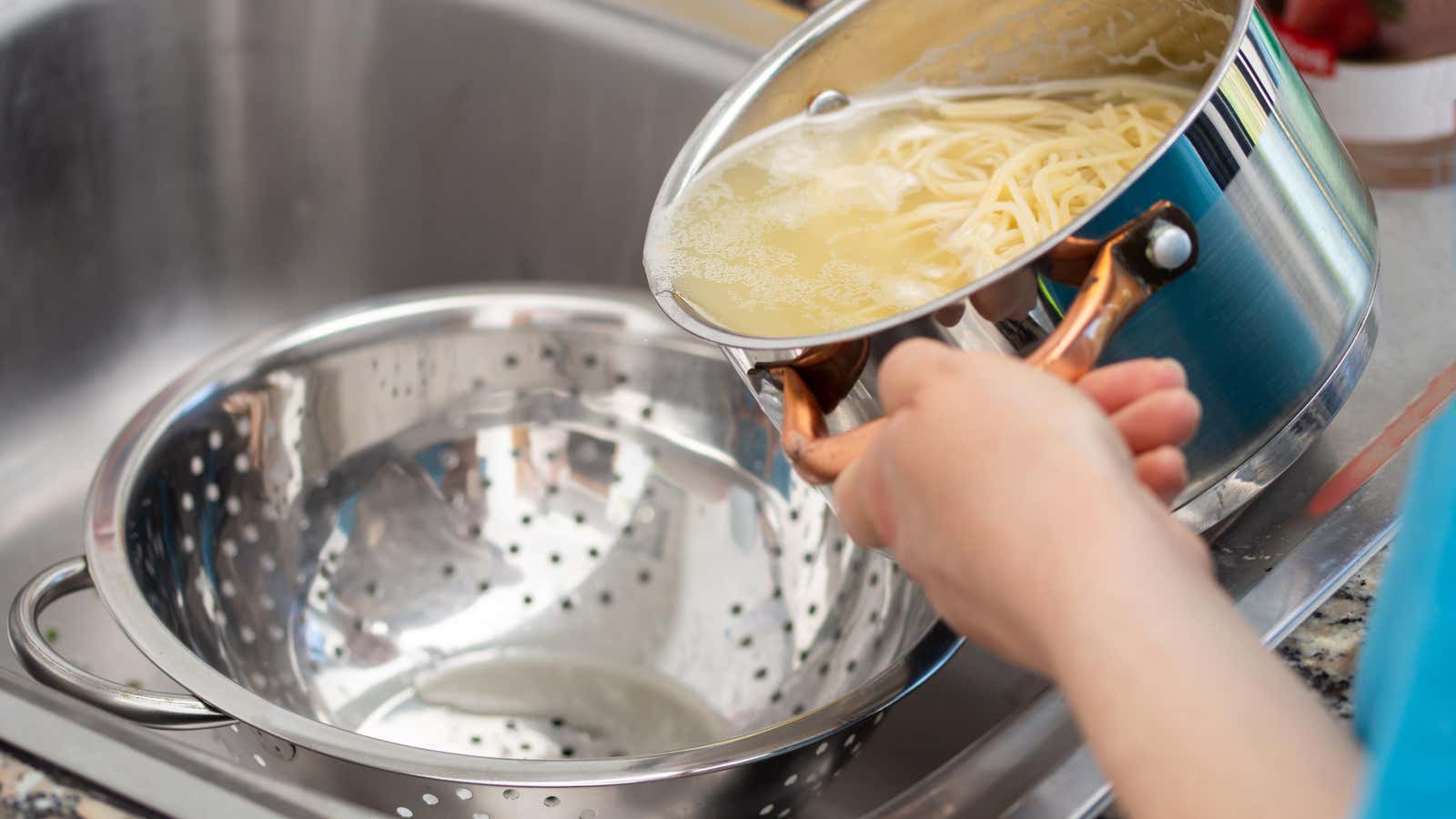So You Forgot to Reserve Some Water for Your Pasta.

Despite what the word may mean, cream is not the key to creating “creamy” pasta dishes. That difference belongs to pasta water, a starchy elixir that can thicken sauces and help them stick to noodles and coat them with tenacity. Reserving a cup before draining the pasta is an important step, but accidents happen and sometimes all the water goes down the drain before you realize what you’ve done.
If this happens, don’t panic. There are two (2) ways to create pasta water substitute.
How to make emergency water for pasta if you accidentally poured yours down the drain
Starch is what makes pasta water so valuable. Normally, this starch is transferred from the noodles to the water during cooking, but there are other ways to get starchy water, and none of them require you to buy or cook extra spaghetti.
By adding semolina flour (most commonly used to make pasta) to a pot of boiling water, you saturate it with starch, effectively mimicking the effect of “real” pasta water.
In fact, you don’t even have to pour the water out of the pasta to use this trick. I often add some semolina flour to my pasta pot along with the noodles to make the water more juicy and creamy, especially if I’m making a dairy-free meal for my lactose-intolerant boyfriend. In this case, I will choose a ratio of 1/2 cup flour to 3 liters of water, but you can reduce this to 2 teaspoons of flour to every glass of water. required.
If you don’t have semolina flour, you can use cornstarch instead. America’s Test Kitchen uses a ratio of 1/4 teaspoon cornstarch to 1 cup water. (Unlike flour, cornstarch is pure starch, so you don’t need much.)
Whether you’re using flour or cornstarch, you’ll make ersatz pasta water by whisking the powder with water and heating it in the microwave for a minute or two until it’s nice and hot. Add it to your sauce as you normally would, or use it to bring tough, leftover pasta back to its former glory.